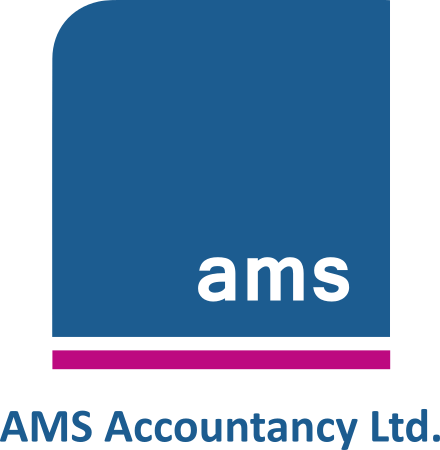On 1st March 2021, the VAT domestic reverse charge for building and construction services came into effect for VAT registered businesses within the Construction Industry Scheme (CIS) in the UK.
In essence, the domestic reverse charge procedure means that a subcontractor registered for VAT and CIS will no longer charge VAT on its invoices to a VAT registered contractor also registered for CIS. Instead, the contractor must account for the VAT on their VAT return as both output tax (sales VAT) and input tax (purchases VAT), effectively shifting the VAT accounting responsibility from supplier to customer.
Here is a link to the official HMRC guidance: https://www.gov.uk/guidance/vat-domestic-reverse-charge-for-building-and-construction-services
RULES WHEN MAKING SALES
Suppose you are a UK subcontractor invoicing a UK contractor for construction services supplied under the Construction Industry Scheme (either labour or labour plus materials but not materials only) where VAT would normally apply at the standard or reduced rate. In that case, you must not charge VAT on your invoice.
Instead, you must issue a reverse charge VAT invoice clearly stating that the domestic reverse charge applies and that the customer (the VAT registered contractor) is required to account for the VAT. For example: “Reverse charge: customer to pay VAT to HMRC.” You must also specify the amount of VAT due under the reverse charge or the applicable VAT rate if the VAT amount cannot be shown. The VAT due should not be included in the amount charged to the customer, but the VAT exclusive value of the sale must be included in Box 6 (sales excluding VAT) of your VAT return.
Where the domestic reverse charge applies, you should verify and keep records of your customers’ VAT registration numbers, CIS status, and Unique Taxpayer Reference (UTR) numbers for each contract, in case HMRC requests this information.
You can check the validity of VAT numbers here: https://www.gov.uk/check-uk-vat-number
RULES WHEN MAKING PURCHASES
If you are a UK contractor receiving invoices from UK subcontractors for domestic reverse charge services (labour or labour plus materials but not materials only), you should not be charged VAT on these invoices.
Instead, the invoice should include a statement such as: “The domestic reverse charge applies and the customer is required to account for the VAT,” along with the VAT amount you need to account for.
You must then account for the VAT due on these purchases by including the VAT figure in both Box 1 (VAT due on sales) and Box 4 (VAT reclaimed on purchases) of your VAT return, effectively netting off the VAT to nil. The VAT exclusive value of the purchase should be entered in Box 7 (purchases excluding VAT).
As usual, use the CIS verification system to confirm that your supplier is registered for CIS: https://www.gov.uk/use-construction-industry-scheme-online
BOOKKEEPING SYSTEMS
Accounting software providers have updated their systems to accommodate the domestic reverse charge, making compliance simpler. Below is guidance on how to handle the reverse charge VAT codes in popular UK accounting software:
Sage – from version 26 onwards
Sage introduced the T21 VAT code for domestic reverse charge transactions.
-
Subcontractor: Using T21, Sage will include the net sales value in Box 6 of the VAT return and no VAT in Box 1.
-
Contractor: Using T21, Sage will include the VAT amount in Boxes 1 and 4, and the net purchase amount in Box 7.
-
Invoices: Invoices coded with T21 will display a note such as ‘Customer to pay output tax of £X to HMRC’.
Xero
Xero provides four new VAT codes for domestic reverse charge: 20% and 5% rates for both purchases and sales. These codes must be set up manually.
-
Subcontractor: Using the correct code, Xero includes the net sales value in Box 6 and excludes VAT from Box 1.
-
Contractor: Using the correct code, Xero includes the VAT amount in Boxes 1 and 4, and the net purchase value in Box 7.
-
Invoices: Invoices will show ‘Domestic Reverse Charge @ 20% (or 5% depending on the service)’ as appropriate.
Kashflow
Kashflow provides detailed guidance on the domestic reverse charge process here: https://www.kashflow.com/support/kb/vat-domestic-reverse-charge-for-building-and-construction-services-cis-reverse-charge/
QuickBooks
QuickBooks offers instructions on how to apply the domestic reverse charge in their software here: https://quickbooks.intuit.com/learn-support/en-uk/reports-and-accounting/how-do-i-set-cis-uk-reverse-charge/00/708856#
SUMMARY
The domestic reverse charge VAT mechanism was introduced to combat VAT fraud within the construction industry by shifting the VAT accounting responsibility from subcontractors to contractors. It applies to specified services reported under the Construction Industry Scheme, excluding zero-rated construction services and materials-only supplies.
Both subcontractors and contractors must ensure their VAT invoices comply with the VAT regulations, including clear reference to the domestic reverse charge procedure, and must use appropriate VAT codes in their accounting systems to correctly report reverse charge supplies and purchases on their VAT returns.
For further information on domestic reverse charge VAT, VAT accounting, and compliance with VAT registration thresholds, consult the latest VAT notices from HMRC and seek advice from a qualified VAT professional.
